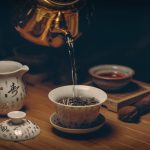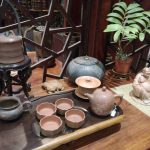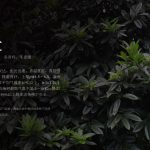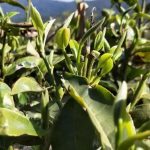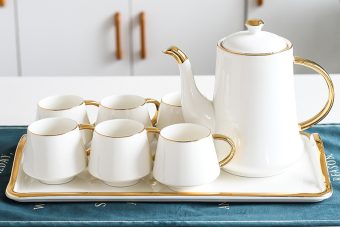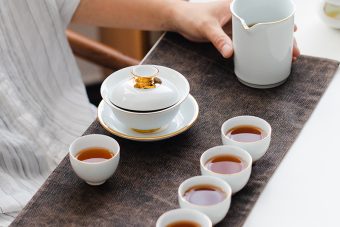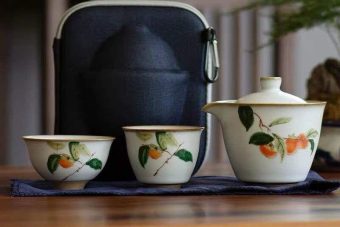The so-called "Kung Fu Tea" is not a name for tea leaf or tea kind,…

by vinux
- July 4, 2019
- 1,398
- 0
The chemical composition of tea is the material basis of tea color, aroma and taste. Most of them can dissolve in water during brewing, thus forming the color, aroma and taste of tea soup. When making tea, we should adjust the temperature of the water, the soaking time and the amount of tea according to the characteristics of different kinds of tea, so that the fragrance, color and taste of tea can be fully developed. To sum up, there are four main factors to make a good pot of tea: the first is the proportion of tea, the second is the temperature of the tea, the third is the soaking time, and the fourth is the number of times.
The leaching rate of various substances in tea in boiling water is related to the tenderness and processing methods of tea. Amino acids have a refreshing nature, so the content of amino acids in tea directly affects the freshness of tea soup. The reason why famous green tea tastes refreshing and glycol is mainly due to the high content of amino acids and low content of tea polyphenols. Summer tea has a low content of amino acids and a high content of tea polyphenols, so it tastes bitter and astringent. So there is the proverb “spring tea is fresh, summer tea is bitter”.
The amount of tea should be different according to different tea sets and different tea grades. Generally speaking, more water and less tea leaves, the taste will be thin and odorless; more tea leaves and less water, tea soup will be bitter and astringent. Therefore, the use of tender tea leaves should be as many as possible; the use of coarser tea leaves can be less, that is, the so-called “roughly taste the fine tea” and “earnestly taste the exquisite tea”.
Common red and green tea (including scented tea) can be brewed in 50-60 ml of water in 1 gram of tea. If it is a 200 ml cup (pot), then put about 3 grams of tea, flush water to 78% full, it becomes a cup of thick and light tea soup. If you drink Yunnan Pu’er tea, you need to put 5 to 8 grams of tea.
Oolong tea, because of its strong drinking habits and its emphasis on taste and fragrance, it needs less and strong soup. The proportion of tea to teapot is used to determine the amount of tea, which is roughly 1/3 to 1/2 of the volume of the teapot. In Chaoshan and Shantou areas of Guangdong Province, the amount of tea put in reached 1/2 to 2/3 of the teapot volume.
The amount of tea and water is also related to the age and sex of tea drinkers. Generally speaking, the middle-aged and elderly people drink stronger tea than young people, and men drink stronger tea than women. If the tea drinker is an old tea customer or a manual worker, the amount of tea can generally be increased appropriately; if the tea drinker is a new tea drinker or a mental worker, the amount of tea can be reduced appropriately.
Generally speaking, tea should not be brewed too strong, because strong tea harms stomach gas, especially for those with deficiency and cold of spleen and stomach. Tea contains tannic acid. If it puts tea leaves too much and too strong, it will shrink digestive mucosa, hinder gastric absorption, cause constipation and yellowing. At the same time, too strong tea soup and too weak tea soup are not easy to experience the tender taste of tea. The ancients said that drinking tea “rather light than strong” has a certain reason.
According to the test, the content of tea juice extract in tea soup brewed with boiling water at 60 C is only 45%-65% of that in tea soup brewed with water at 100 C compared with that brewed with water at the same time and amount of tea. That is to say, when the water temperature of brewing tea is high, the tea juice is easy to leach; when the water temperature of brewing tea is low, the tea juice leaching speed is slow. “Brew tea with cold water will be strong slowly”, that’s what it means.
Tea is usually made with boiling water, when the water temperature is about 85 degrees Celsius. Boiling water will destroy vitamin C and other ingredients, while caffeine and tea polyphenols leach quickly, making the tea taste bitter and astringent; low water temperature will make the tea float but not sink, the effective ingredients contained cannot be soaked out, the tea soup tastes light, odorless, non-alcoholic, light and tasteless.
The temperature of tea-making water is also related to the tenderness, elasticity and size of tea. Generally speaking, the raw materials of tea are coarse, compact and whole leaves, which are more tender, loose and fragmented than the raw materials of tea. Tea juice leaching is much slower, so the temperature of brewing water is higher. The water temperature is also related to the variety and color of brewing.
Specifically, the water temperature of high-grade fine and the tender famous tea, especially high-grade famous green tea, is 95 C when the fragrance is opened and 80 C to 85 C when brewing. Only in this way can the tea soup be clear and not muddy, pure but not blunt in aroma, fresh but not ripe in taste, bright but not dark at the bottom of the leaves, making people drink delicious and regard it as emotional. If the water temperature is too high, the color of the soup will turn yellow; tea buds cannot stand upright because of “ripening” and lose appreciation; vitamins have been damaged a lot, reducing nutritional value; caffeine, tea polyphenols are quickly leached, and make the soup bitter and astringent, which is what tea people often call “hot ripening” tea. On the contrary, if the water temperature is too low, the permeability is low, which often makes the tea floating on the surface. The effective ingredients in the tea are difficult to learn to leach. As a result, the tea taste is weak, which will also reduce the efficacy of tea drinking. Large quantities of red, green and scented tea can be brewed in boiling water at about 90 degrees Celsius because the raw materials of tea are old and tender.
Oolong tea, Pu’er tea and Tuo tea should be brewed with boiling water at 100 C because the raw materials are not delicate and the amount of tea used is large. Especially in order to maintain and improve the water temperature of Oolong tea, hot tea sets should be poured by boiling water before brewing tea, and warm teapots with boiling water after brewing. And this is to increase the temperature and give full play to the fragrance of tea.
As for the tightly pressed tea that the frontier brothers and nationalities drink, they must first crush the tea into small pieces and then boil it in a pot or pot before drinking it for people.
The temperature of the water can be judged by using a thermometer and a timer without measuring it. After mastering it, it can be determined by experience. Of course, all tea-making water must be boiled so as to achieve the effect of temperature control by natural cooling.
